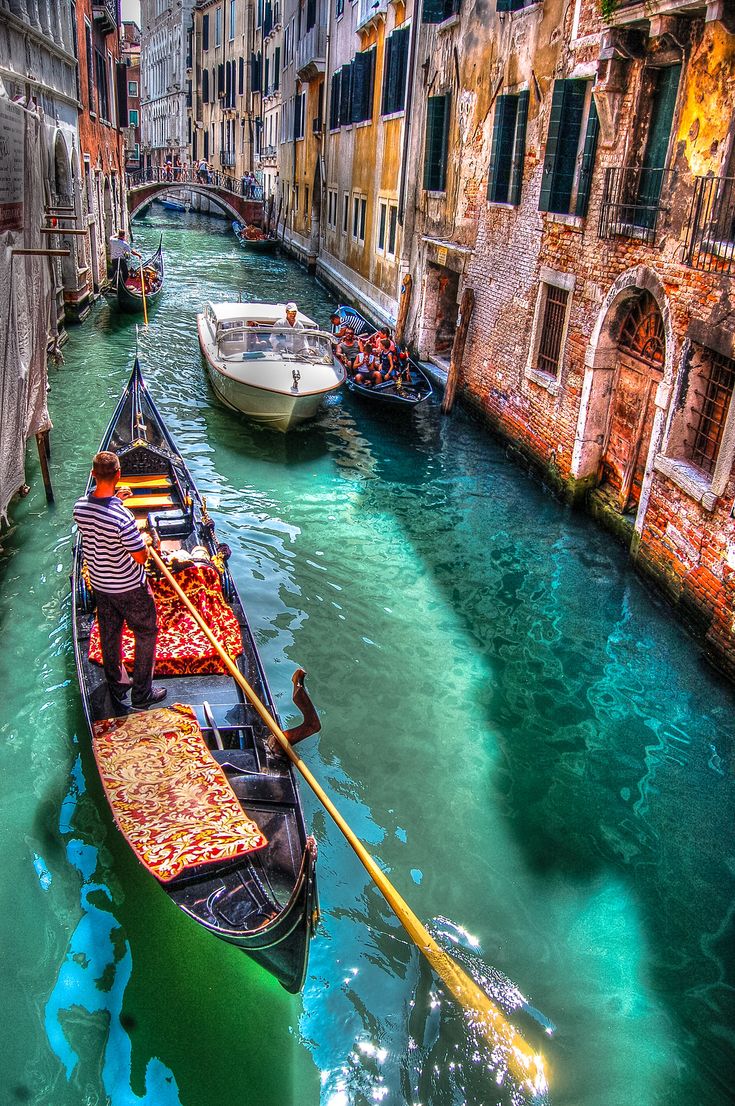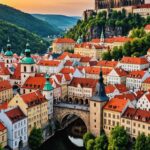Venice, Italy: The Timeless City of Canals
History of Venice
Venice, often referred to as “La Serenissima,” was founded in 421 AD by refugees fleeing barbarian invasions. Built on over 100 small islands in a lagoon, Venice’s unique geography led to the development of a maritime empire. By the Middle Ages, it became a powerful city-state and a hub of trade between Europe and the East.
During the Renaissance, Venice flourished as a center of art, culture, and innovation. However, its decline began in the 18th century as political and economic shifts reshaped Europe. Despite challenges, Venice remains a cultural treasure, attracting millions of visitors annually.
Daily Life
Life in Venice revolves around its waterways. Without cars, Venetians rely on boats for transportation, including gondolas, vaporettos (water buses), and private water taxis. The rhythm of the city is marked by local markets, artisanal workshops, and vibrant festivals.
Residents often gather in piazzas like St. Mark’s Square, the city’s social and cultural heart. Daily life is a blend of preserving traditions, embracing tourism, and navigating the challenges of rising sea levels and over-tourism.
Impact on Daily Life Globally
It’s influence extends far beyond Italy. As a symbol of architectural and cultural ingenuity, it inspires urban planning and design worldwide. The city’s art, including works by Titian and Tintoretto, has left an indelible mark on global culture.
It’s environmental challenges, particularly those related to climate change, have also sparked international conversations about sustainability and heritage conservation.
Fascinating Facts
- Floating City: Venice is built on millions of wooden piles driven into the lagoon’s sediment.
- No Roads: It’s one of the few cities in the world with no cars or trucks.
- Historic Regattas: The city’s love for rowing is celebrated with events like the Regata Storica.
- Artistic Legacy: Venice hosts the Venice Biennale, a world-renowned art and architecture exhibition.
- Aquatic Challenges: The city is slowly sinking, with frequent flooding events known as “acqua alta.”
Significance
It symbolizes human ingenuity and resilience. Its unique blend of art, history, and architecture makes it one of the most visited and revered cities in the world. Venice’s ability to adapt and thrive amidst environmental challenges highlights the importance of balancing heritage preservation with modern needs.
Observance and Celebrations
It is home to some of Italy’s most iconic events:
- Carnival of Venice: Known for its elaborate masks and costumes, this festival dates back to the Middle Ages.
- Venice Film Festival: One of the oldest film festivals, attracting global cinematic talent.
- Festa del Redentore: Celebrated in July, it includes fireworks and feasting to commemorate the city’s deliverance from the plague.
Important Points to Remember
- Respect for Heritage: Visitors should follow guidelines to protect the city’s fragile infrastructure.
- Eco-Tourism: Sustainable travel practices are essential to preserving Venice for future generations.
- Local Culture: Support local artisans and businesses to experience authentic Venetian life.
- Climate Concerns: Rising sea levels pose an existential threat, emphasizing the need for global action.
FAQs
1. Why is sinking? It is sinking due to a combination of natural subsidence and rising sea levels caused by climate change.
2. Can tourists use gondolas? Yes, gondola rides are a popular way to explore the canals, offering a unique perspective of the city.
3. What is the best time to visit? Spring (April to June) and autumn (September to October) are ideal for pleasant weather and fewer crowds.
4. How can tourists reduce their environmental impact? Visitors can choose eco-friendly accommodations, avoid single-use plastics, and respect local guidelines.
Wishing a Sustainable Future
It’s enduring charm lies in its ability to captivate hearts and minds. As we explore its winding canals, historic landmarks, and vibrant culture, we must also commit to its preservation. By supporting sustainable tourism and raising awareness about its challenges, we can ensure that Venice remains a beacon of beauty and history for generations.
Why is Important to Society
It teaches us about the power of creativity, resilience, and adaptation. Its preservation is a shared responsibility, reminding us of the delicate balance between human progress and environmental stewardship. Venice’s legacy inspires innovation while celebrating the richness of cultural heritage.










